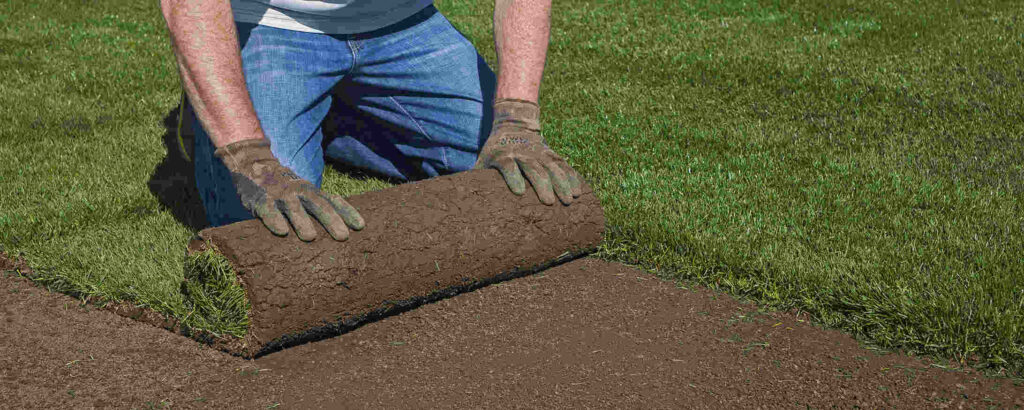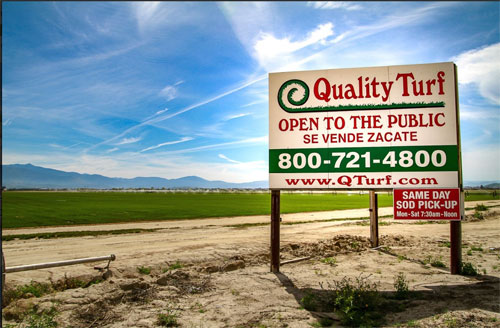What Grass Should You Get for Southern California?
Installing a lush, green lawn can transform your outdoor space, but timing is crucial. While spring is often considered the best time for laying sod, late summer – especially in Southern California – is far superior, as the heat is on the decline. With proper planning and care, your new yard will be looking fresh and green in no time. This guide will help you navigate summer sod installation and provide essential lawn care tips for your new turfgrass.
Considerations for the Best Time to Lay Sod
Late summer sod installation in Southern California comes with unique challenges and opportunities. Warm-season grasses, which thrive in our climate, can still establish themselves before winter if installed by early September. However, the heat and potential water restrictions can make the process more demanding. It’s important to consider the time of year to lay sod for optimal results.
Climate Factors
Southern California’s late summer weather typically brings high temperatures and low humidity. These conditions can stress newly installed sod, making proper irrigation and care essential. Be prepared for daily watering and close monitoring of your new lawn during this critical period. Summer installations require extra attention to ensure successful root growth.
Choosing the Right Grass
Selecting the appropriate grass type is crucial for success. Fescue (also called marathon) or St. Augustine are excellent warm-season options that can withstand Southern California’s heat. Consider drought-tolerant varieties to conserve water and ensure long-term lawn health. Consult with a local sod farm or garden center for advice on the best grass types for your specific area.
Preparing the Site (Rototill and Soil Test)
Before installation, conduct a soil test in the area you want the sod installed to determine any necessary amendments. In our typically alkaline environment, you may need to adjust your soil’s pH levels and add organic matter to improve drainage and nutrient retention. Proper site preparation is even more critical in hot, dry conditions. Use a rake or a rototiller to level the bare soil area and remove any debris. Consider taking a soil sample to a local extension office for a detailed soil analysis.
Water Management
Watering new sod is key to successful late summer installation. Laying new sod requires frequent, shallow watering to establish roots. Make sure to avoid deep watering so as to not oversaturate the soil. Be aware of local water restrictions and implement conservation techniques such as installing smart irrigation systems or using drought-resistant grass varieties. Setting up a sprinkler system or using a hose-end sprinkler is the best way to ensure even coverage.
Laying Your New Sod
When installing your sod in hot weather, work in small sections to prevent the grass from drying out. Lay the sod tightly against adjoining pieces to avoid gaps and ensure good soil contact. Water each section immediately after installation to prevent heat stress. Use a lawn roller to ensure good contact between the sod and soil, eliminating air pockets that can dry out roots.
Post-Installation Care
After installation, water your new lawn frequently but avoid overwatering. Gradually reduce the watering frequency as the grass establishes. It takes about two weeks for new sod to establish its root system. Wait at least two weeks before mowing, and avoid heavy foot traffic during the establishment period. Monitor for signs of heat stress, such as wilting or discoloration.
Common Challenges and Solutions
Heat stress is a primary concern during late summer installation. Signs include wilting, browning, or curling of grass blades. Combat this by watering during cooler parts of the day and applying a light layer of compost to help retain moisture. Be vigilant for pests and diseases, which can be more prevalent in warm weather. Always follow the guidance provided by your sod supplier or a lawn care forum for specific issues.
Fertilizing Your New Lawn
It’s a good idea to fertilize your new sod about two weeks after installation. Choose a fertilizer high in phosphorus to promote root growth beneath the sod. Be careful not to over-fertilize, as this can damage the young grass. A soil test can help determine the best fertilizer for your specific lawn needs.
Mowing Your New Sod
Once your newly laid sod is established, it’s time to mow. Use a walk-behind mower for the first few cuts to avoid damaging the new grass. Set your mower to a higher setting initially, gradually lowering it to your desired height over several mowings. This encourages deeper root growth and a healthier lawn.
Cost Considerations
Late summer installation may incur higher costs due to increased water usage and the potential need for additional care. However, proper installation can lead to long-term savings through reduced water bills and lower maintenance needs once the lawn is established.
Alternative Options
If late summer sod installation seems too challenging, consider alternatives. Waiting for cooler fall temperatures can make the installation process easier but may delay full establishment until the following spring. For those seeking a low-maintenance option, artificial turf provides a green appearance year-round without the water demands.
In conclusion, while late summer sod installation in Southern California presents challenges, it’s achievable with proper planning, grass selection, and care. By following these guidelines and staying attentive to your new lawn’s needs, you can enjoy a beautiful, healthy yard before the cooler months arrive. Remember, a well-maintained lawn not only enhances your home’s curb appeal but also provides a wonderful space for outdoor activities.
Quality Turf: The Sod Farm that Helps
When it comes to transforming your yard with beautiful, healthy sod, Quality Turf is here to help you in Southern California. As experts in sod installation, we offer a comprehensive service that takes the guesswork out of laying new sod. Quality Turf not only supplies premium grass varieties suited to our local climate, but they also handle the delivery and professional installation. Our experienced team ensures that your sod is properly laid, minimizing waste and maximizing the chances of successful establishment. With Quality Turf, you can be confident that your new lawn will be delivered fresh from the sod farm and installed with precision, following best practices for summer installations. We’ll work with you to determine the best grass type for your specific needs and provide valuable advice on post-installation care. By choosing Quality Turf for your sod project, you’re investing in a lush, green lawn that will thrive in Southern California’s unique environment.


